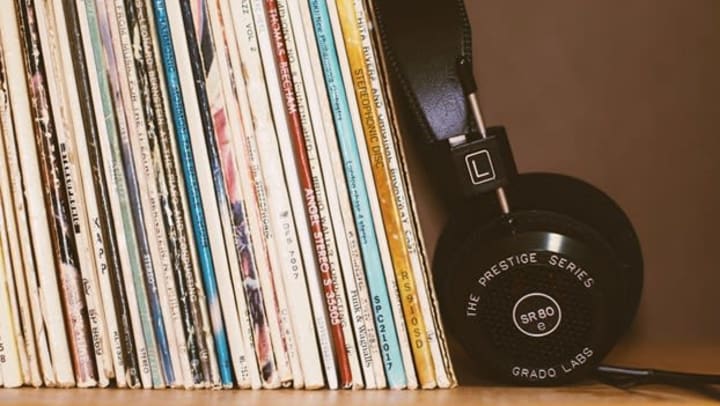There’s something magical about vinyl records that goes beyond hipster hype. Any analog audiophile will tell you that there’s an unparalleled richness, depth, and warmth that exists between those telltale lo-fi pops.
What’s more, vinyl records are a physical artifact of music: a way to hold and display the albums you love—something that has become rare in an increasingly digital world. They also make a good investment for serious collectors, provided records are correctly stored.
Here, we will discuss how to store records safely and effectively, both in terms of short-term and long-term storage solutions.
But first, let’s talk about sleeves!
Use Vinyl Inner Sleeves and Outer Sleeves to Protect Your Records
Inner record sleeves and why you should use them
Start with sleeves if you’re just beginning to learn how to store records safely and effectively. When you buy a vinyl record, either new or used, from your local record store, usually it will have a paper inner sleeve in addition to the (typically cardboard) album jacket. One of the cheapest, most straightforward ways to level up your vinyl storage strategy is switching to premium inner sleeves.
Some people who don’t know how to store records properly stop using the inner sleeve altogether for records they frequently listen to since doing so makes it easier to slide the record into and out of the outer jacket. That’s a big no-no. When you slide records in and out of their cardboard jackets without using an inner sleeve, they’ll accumulate static and dust, which will lead to annoying record skips in the short term and permanent damage in the long term.
So, if you’d like to properly protect your investment for decades to come, consider high-quality anti-static sleeves, like ones made using high-density polyethylene (HDPE) plastic. You’ll see this referred to simply as “poly” for short in the vinyl community. These sleeves may be entirely made from poly, or they may be a paper sleeve with a poly lining—both are great options. There are a variety of brands and designs, and they’re very inexpensive. In fact, if you’re on a budget, you can find quality record inner sleeves for 10 or 20 cents per record. Even the most expensive archival sleeve setups for serious record collectors (including both inner and outer sleeves) will typically cost less than a dollar per record. Some good options include:
- Mobile Fidelity Master Sleeves
- Sleeve City Diskeeper™ 1.5 Round Bottom LP Sleeve
- Sleeve City Poly Lined Paper Inner Sleeve
- Big Fudge Premium Master Vinyl Record Sleeves
Outer record sleeves and why you should use them
Outer sleeves go outside the cardboard jacket, which provides both an extra layer of protection for the vinyl record itself as well as the jacket. A creased, bent, or torn jacket drastically reduces the value of a record.
As with inner sleeves, there are a bunch of options. These include two-pocket outer record sleeves, which store the jacket and the record in different pockets—this makes it easy to get the record out and play it if you’re actively listening to them! Some vinyl aficionados also store the record behind the jacket instead of inside it, all within an outer sleeve.
Good options to investigate include:
- Sleeve City Ultimate Outer Sleeve 5.0
- Bags Unlimited Record Jacket Sleeves
- Vinyl Styl Poly Outer Record Sleeves
- Mobile Fidelity Archival Clear Record Outer Sleeves
If you want to keep your records safe, use an inner sleeve and an outer sleeve. This is a no-brainer. Ensure the inner sleeve is turned 90 degrees inside the outer sleeve to fully guard against dust. These typically cost less than one dollar per record, and they'll keep your vinyl playable (and sellable!) for years longer.
Creating the Perfect Environment for Storing Records
Serious collectors and archivists aren’t usually taking all of their records out of their sleeves and listening to them regularly. For these people, accessibility is second to preserving the records and keeping them safe.
Dedicated storage space is the absolute best way to store records properly. You can store records long-term in your own home, but a self-storage space is better. After all, we’ve heard horror stories of entire collections stored in attics that got too hot or basements that got too humid, warping thousands of dollars worth of records irreparably. When considering how to store records safely, here are some primary concerns:
Don’t store records horizontally
The reason collectors and record stores always store records vertically is that they can’t handle any sort of weight load. It may conserve storage space to stack them horizontally, but they’ll bend or break.
Minimize light to preserve your records
Don’t store records in a place where they’ll be in direct sunlight, like near windows. Sunlight degrades plastic over time. Of course, your records are probably stored in their jackets, but sunlight will cause the color of your jackets to fade over time. That will make them less beautiful—and less valuable.
Climate control protects records
Climate control is arguably the most crucial consideration in storing records properly. Ideally, records should be kept at a temperature between 65° and 70° F (18°-20° C) and humidity levels of 45%-50%. Again, self-storage units prove to be the ideal option. Storage units like the ones available to rent through BuxBear maintain a moderate temperature that protects vinyl records from extreme temperatures and humidity. Additionally, airflow is beneficial to records, so don’t keep them sealed in a container. If you store them in plastic storage bins, just leave the lids off.
Store records on strong shelves
Store records in containers on shelves up off the ground if you can. This attracts less dust. Don’t stack records or containers holding records on top of each other. Most importantly, be mindful of weight! Stacks of records are heavier than most people realize. A square foot of records can weigh about 30 pounds, so make sure any shelves or cabinets you use to store records can support at least 35lbs per square foot. Numerous shelving options are designed specifically with vinyl records in mind that are both stable and stylish. Here are a few examples, though so many more are out there:
- MODERN VINYL Record Holder
- Vinyl Record Storage Shelf
- Way Basics Vintage Vinyl Record Cube 2-Shelf Storage
Many of these more stylish options are more suited for use in your home for short-term easy access. For shelving in a self-storage space or a dedicated record collection room, you might as well use larger, more industrial-style shelving.
If you handle your vinyl with care and learn how to store your records safely, they’ll last a lifetime. Whether you’re building a collection for the purposes of buying and selling—which can be lucrative!—or you’re just a music lover who loves that analog sound, protecting your records will keep the music flowing for decades to come.
Visit us at your local BuxBear Storage location to secure a climate-controlled storage unit for all your storage needs! And give us a call with any storage-related questions. We’re happy to help!


